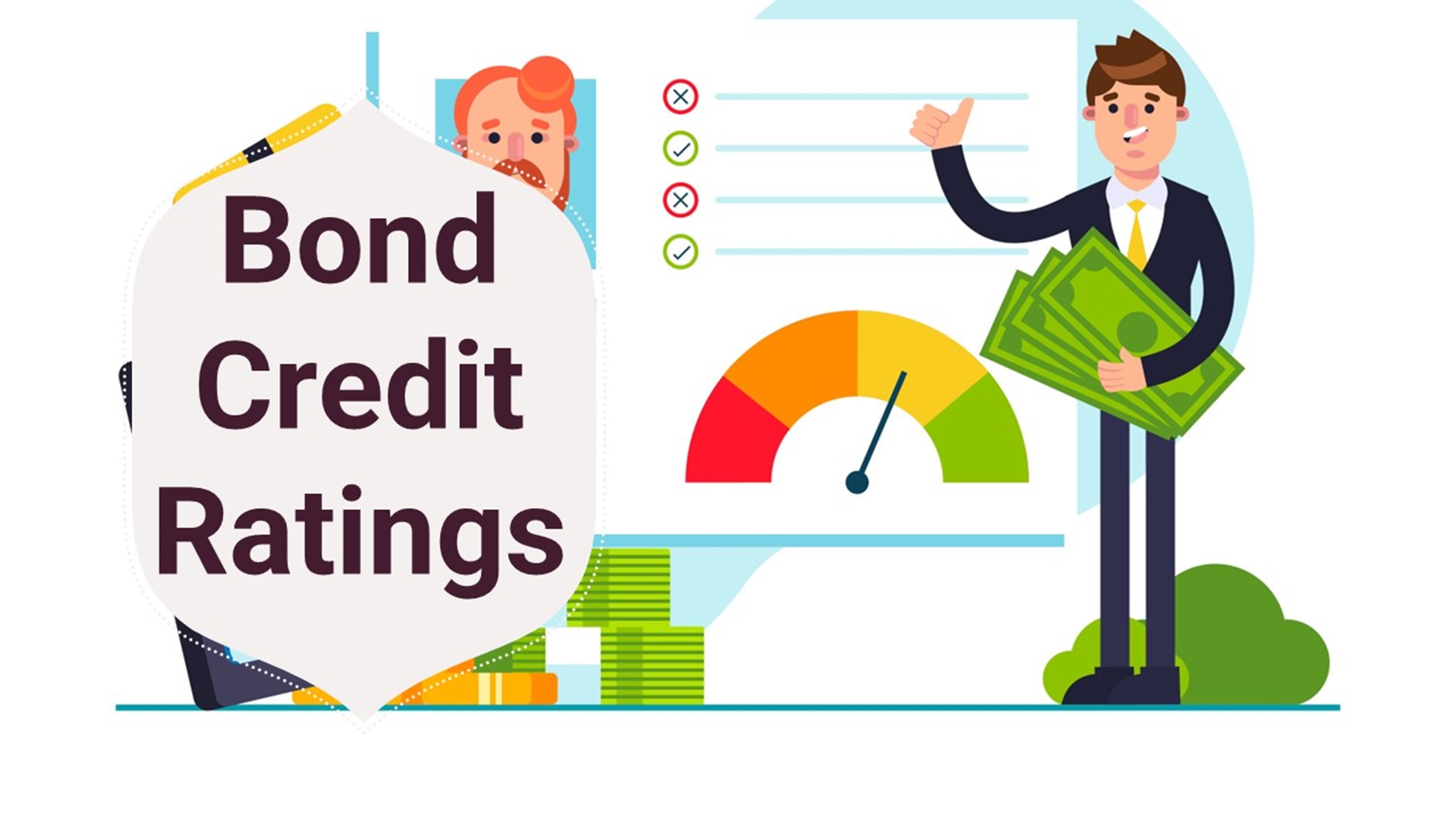What Are Bond Credit Ratings? Meaning, Scale, Importance & How They Work in India

When a business lends money to another company or government entity, it naturally wants assurance that the borrower will honour their commitment. Similarly, as an investor buying bonds, you are essentially lending money to the issuer, be it a government or a corporation. But how do you measure the reliability of that issuer? This is where bond credit ratings come into play. They serve as a vital indicator of the issuer’s ability and willingness to repay the principal and interest on time, helping investors make informed decisions.
A bond is a fixed-income instrument representing a loan made by an investor to the issuer. Each bond comes with a maturity date, the specific date when the issuer must repay the principal amount to the investor, ending the bond’s term. Until maturity, the issuer typically pays periodic interest, known as the coupon rate, which is expressed as a percentage of the bond’s face value.
For example, a bond with an 8% coupon rate pays the investor 8% of its principal annually as interest.
Understanding these elements —bond, maturity date, and coupon rate —is essential for evaluating the investment’s timeline and income potential.
What is a Bond Credit Rating?
Think of a bond credit rating as a financial report card for the issuer. This explanation of bond credit rating refers to an independent evaluation by credit rating agencies such as CRISIL, ICRA, CARE in India, or Moody’s, S&P, and Fitch globally. These agencies analyse the issuer’s financial health and assign a rating that reflects the likelihood of timely repayment of principal and interest.
A bond credit rating is a letter-based score that indicates the credit quality of a bond, which directly influences the interest rate (or coupon rate) the issuer must offer to attract investors.
- A high rating (e.g., AAA) means the bond is very safe with low default risk.
- A low rating (e.g., BB or below) suggests higher risk but potentially higher returns.
For instance, a government bond with an 8% coupon rate and an AAA rating is considered safer than a corporate bond offering a 14% coupon rate with a BB rating.
Why Are Bond Ratings Important?
Imagine two companies seeking funds to expand their operations:
- Company A has a solid track record, consistent profits, and a strong balance sheet.
- Company B is relatively new, with fluctuating revenues and higher debt.
If you had to choose which company to lend money to, Company A would be the obvious choice due to its reliability. Bond credit ratings function similarly; they help investors differentiate between issuers, such as Company A and Company B.
Here’s why bond ratings matter to investors:
- Risk Assessment: They help you avoid bonds that may default and cause losses.
- Investment Matching: Ratings guide you to select bonds that align with your risk tolerance.
- Return Expectations: Ratings influence the interest rates offered on bonds, including interest on tax free bonds.
- Market Pricing: Ratings affect bond prices and liquidity in the market.
How Do Agencies Rate Bonds?
Credit rating agencies study several things before assigning a bond rating:
- Financial Strength: Agencies review the issuer’s balance sheet, cash flow, and debt levels. A company with strong liquidity and manageable debt generally earns a higher rating.
- Industry Conditions: The issuer’s industry health influences ratings; for example, a government bond in a stable economy usually receives a higher rating than a corporate bond in a volatile sector.
- Management Quality: Experienced and transparent leadership improves confidence and ratings.
- Past Payment History: The timely repayment of previous debts has a positive impact on the rating.
- Economic Environment: Political stability and economic conditions affect the issuer’s ability to meet obligations.
Understanding the Bond Credit Rating Scale
Credit rating agencies use a scale to categorise bonds based on credit risk:
|
Rating |
What It Means |
Risk Level |
|
AAA / Aaa |
Excellent safety |
Very Low Risk |
|
AA / Aa |
Very strong |
Low Risk |
|
A |
Strong |
Moderate Risk |
|
BBB / Baa |
Okay |
Some Risk |
|
BB / Ba |
Less than okay |
High Risk |
|
B |
Weak |
Very High Risk |
|
CCC and below |
Very weak |
Highest Risk |
|
D |
Defaulted |
No Payment Expected |
- Investment-grade bonds fall within AAA to BBB.
- Bonds rated below BBB are considered non-investment grade or junk bonds, offering higher returns but with increased risk.
How Bond Ratings Influence Your Investment Choices?
When evaluating bonds, understanding the bond credit rating scale is crucial because it directly impacts your investment strategy and expected returns. Consider two businesses seeking capital through bonds:
- Company X is a well-established firm with an AAA bond credit rating. Its strong financial position and stable cash flows mean it can offer bonds with an 8% coupon rate. These bonds appeal to investors prioritising capital preservation and steady income.
- Company Y is a growing enterprise with a BB rating, reflecting higher credit risk. To attract investors, it offers bonds with a 14% coupon rate. While the potential returns are higher, so is the risk of default.
This contrast illustrates how bond ratings serve as a risk barometer. Investors with a low-risk appetite may lean towards bonds like Company X’s, accepting lower returns in exchange for security. Conversely, those willing to take on more risk might consider bonds like Company Y’s for higher income potential.
Credit rating agencies analyse factors such as financial strength, industry conditions, and management quality to assign these ratings. A higher rating signals confidence in timely interest and principal payments, while a lower rating indicates caution.
Bondbazaar empowers investors by providing access to thousands of bonds across various credit ratings, enabling you to tailor your portfolio according to your risk tolerance. With real-time trading and zero charges, you can buy or sell bonds quickly, ensuring your investments align with changing market conditions and personal goals.
When Ratings Change: What Should You Do?
Bond credit ratings are dynamic and can be upgraded or downgraded based on the issuer’s financial performance.
For example, if you buy a bond rated A+ with an 8% coupon rate, and the rating is later downgraded to BBB, this signals increased risk. In such cases, investors might consider selling the bond to avoid potential losses.
Monitoring bond ratings regularly helps investors make informed decisions about holding or exiting their investments.
Bond Ratings and Returns
There is a direct relationship between bond ratings and returns:
- High-rated bonds (AAA/AA): Offer lower returns but greater safety.
- Lower-rated bonds (BB/B): Offer higher returns to compensate for increased risk.
As an investor, you must decide whether you prioritise stability or higher income with more risk. Bondbazaar provides expert guidance and transparent information to help you strike the right balance.
Why Choose Bondbazaar?
Thousands of investors rely on Bondbazaar for its unique advantages:
- Earn 8-14%* fixed returns on a wide selection of bonds.
- Buy and sell bonds in real-time on a trading platform, ensuring liquidity.
- Zero charges: No account opening, brokerage, or maintenance fees.
- Wide selection: Access over 10,000 bonds across government securities and corporate bonds.
- Regulated and secure: SEBI-regulated and registered OBPP platform.
- Expert support: A combination of automated digital tools and a dedicated service team ensures a seamless experience.
Bonds are held in demat form, and interest and principal payments are credited directly to your account, making investing straightforward and hassle-free.
Conclusion
Bond credit ratings are essential tools that help investors understand the safety and risk associated with bonds. By understanding the bond credit rating scale and the factors that influence ratings, investors can make informed decisions aligned with their financial objectives.
Whether you prefer the safety of Government Bonds or the potentially higher returns of Corporate Bonds, Bondbazaar offers a comprehensive, transparent, and flexible way to invest. With fixed returns ranging from 8% to 14%*, you can build a diversified bond portfolio that meets your risk tolerance and income needs.
Stay informed, choose wisely, and invest confidently for steady, reliable returns.
